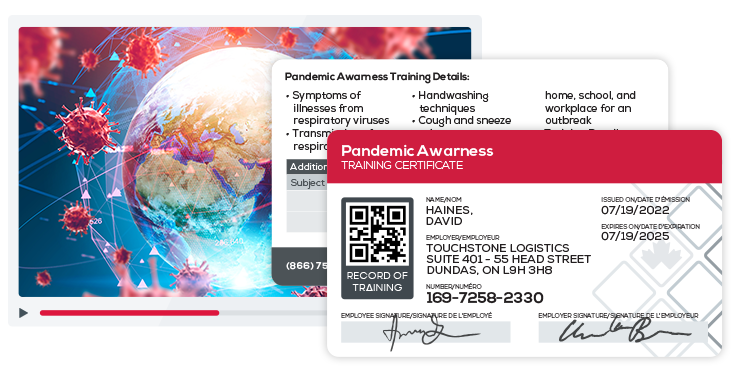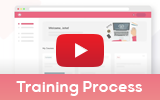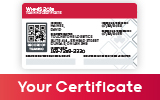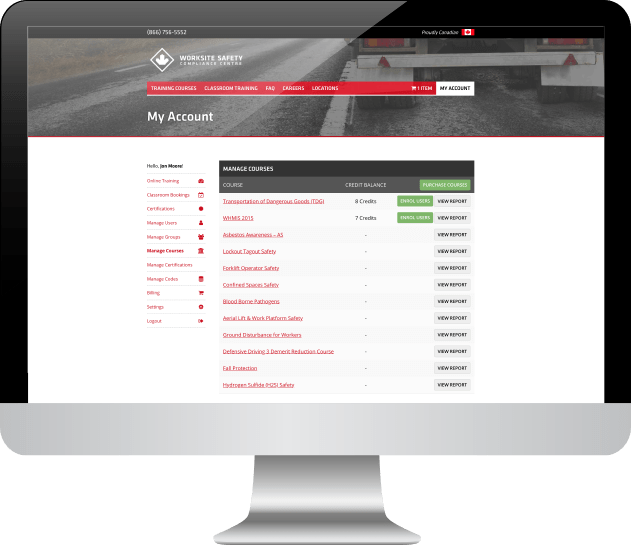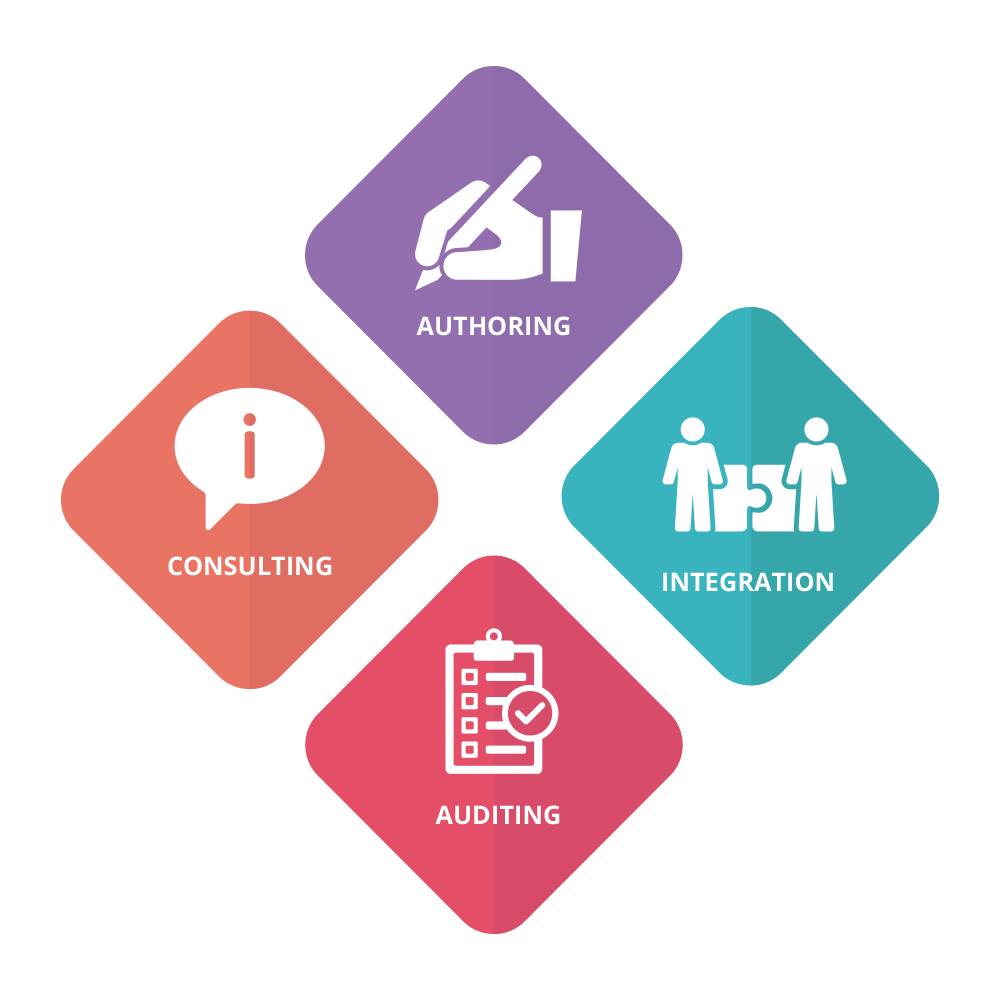Pandemic Awareness - Respiratory Viruses
Throughout this course, students will learn about the nature of viruses, how to protect themselves and others from viral spread, and how to react to the different effects of outbreaks and becoming ill during a Pandemic event. This course is based on the data available and best practices learned from Influenza, COVID-19, and Severe Acute Respiratory Syndrome (SARS).
Consulting services are also available for employers looking to safely re-open their workplaces: COVID 19 Return to Work
Additional Resources:
For outbreak updates within Canada regarding the Coronavirus disease (COVID-19), please refer to the Government of Canada Outbreak Update page:
https://www.canada.ca/en/public-health/services/diseases/2019-novel-coronavirus-infection.html
For more information specifically about the Coronavirus disease (COVID-19), please refer to the World Health Organization’s update page:
https://www.who.int/emergencies/diseases/novel-coronavirus-2019
| Average Duration: 30 Minutes | |
| Printable Certificate Upon Completion | |
| Includes Knowledge Assessments & Final Exam | |
| Self-Paced. Available 24/7 | |
| Live Student Support | |
| Permanent Record of Training | |
| User Management Tools Available |
Course Outline
1. How Viruses Work
Chapter one covers how viruses work, what the difference between the types of microorganisms are, and the most common symptoms of respiratory viruses are. You will also learn how these viruses pass from person to person, and what the terms outbreak, epidemic, and pandemic actually mean.
2. How to Protect Yourself
Chapter two outlines the main ways of protecting yourself to prevent the contraction of respiratory viruses, and other protective measures you can take to ensure you limit the amount of virus you pass along to others. These measures include proper handwashing techniques, cough etiquette, and social distancing.
3. Dealing with a community outbreak
Chapter three gives you an overview of what to expect during an outbreak of a respiratory virus in your community, and what you can do at home to prevent the further spread or contraction of an illness. As well, you will be given best prevention techniques for in the home, and for when you need to leave the home for work or to go shopping.
4. What to do if you become sick
Chapter four focuses on what to do if you contract a viral illness, and the proper steps to reducing the risk to others in your home or in public. As well as some suggestions for when to stay home, isolating yourself, going to the hospital, and travelling if required.
Bulk Discounts. Free Tools.
Depending on how many training credits you purchase, you may receive a discount. Once purchased, training credits may be used to assign training to users in your account or held for future use.
In addition to the training that you purchase, you will also have access to a number of free training management tools. These tools allow you to add and manage users in your account, distribute training courses, view training progress, print certificates, view records of training, and create customized certification reports to ensure your users are always in compliance.
Additional Services
We put our team of professionals to work to build solutions that improve results, save time, relieve your budget and keep your people safe. In addition to our training programs, we also provide Consulting Services, Train The Trainer Solutions, Course Authoring, and Integration services.

